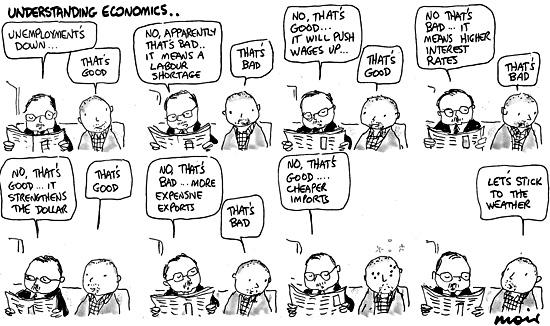The easiest way to distinguish between macroeconomic and microeconomics is the scale. Macroeconomics deals with the bigger picture of the economy and how the overall economy works. It involves the study of employment, gross domestic bruto and inflation. It is part of the policy and government decision and affects nationwide. Microeconomics related to little picture of the economy, in the individuals and business scale. It concerned about supply and demand interaction in the market for goods and services. There are much more about the microeconomics and macroeconomic.

greaterauckland.org.nz
Macroeconomics
Macroeconomic is a field study of economic behaviour that concerns about the economy as a whole, means the entire business. It looks at ‘aggregate’ variables, such as aggregate demand, national output like gross domestic product and inflation and how it is affected by changes in unemployment, national income, the rate of growth and price levels. In Macroeconomic, it will look at how net import affected a national economy for example. Another example is how unemployment rate affecting the GDP. It plays in nationwide scale, and it is used often used for the decision making for national and monetary policy.
In short, macroeconomic is more complex. This field is divided into the study of national economic growth, in the long run, the formulation of the policies to stabilise the national economic, minimising fluctuation in growth and prices. The policies include government spending and taxing regulation or monetary policy action through rate interest etc by the central bank.
Microeconomics
Microeconomic’s focus on supply and demand and any other forces determine the price levels of goods and services. The company that looks for the strategy to maximise it is production, for becoming the better competitor in the market is one of the example the application of microeconomics. As microeconomic’s scale revolves around individuals and companies, the application of the study looks at issues such as consumer behaviour, individual labour markets the theory of firms and related topics such as the nature of market competition, economic welfare, the role of imperfect information in economic outcomes, and at the most abstract, general equilibrium, which deals simultaneously with many markets.
Microeconomics also concerns in the issues such as the effects of minimum wages, taxes, price supports, or monopoly on individual markets. It has applications in trade, industrial organisation and market structure, labour economics, public finance, and welfare economics. This study offers insights aiming and examine on decision making of in the business decision making or formulating public policies. It is also taking into consideration tax and regulation that applied.
Although it is convenient to split up economics into two branches – microeconomics and macroeconomics, it has similarities and generally complements each other. A lot of microeconomic principles are used in macroeconomics. To exemplify, the study of impact devaluation will like to use same economic principles, such as the elasticity of demand to changes in price. These two are also reverse influence towards another and vice versa. For example, changes in oil price will have the impact on cost-push inflation. Sometimes, the distinction is even blurry between the two, to exemplify, house prices’ rise which a microeconomic effect for the property market, but it has large influence so it can be considered as the macro-economic variable that will influence the monetary policy.






